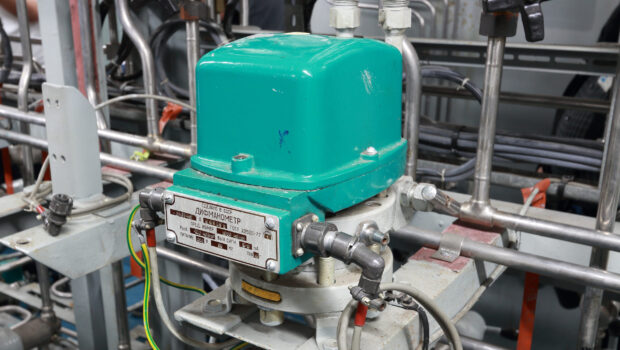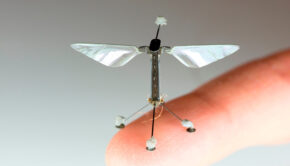What are the uses of a Transducer?
Transducers are used in using various electrical and electronic components and appliances. Energy is transduced when it is converted from one form into another during transduction. The main feature of this process is that the input energy is sensed by a sensor and then converted into a different form by a transducer. Transducers translate properties, quantities, or states into electrical outputs using measurements. We will discuss what a transducer is, what types of transducers are available, and what applications a transducer can use.
What is a Transducer?
It converts one form of energy into another with the help of an electrical device. Devices used to handle these energies include mechanical devices, electrical devices, light devices, chemical devices, thermal devices, and devices dealing with acoustic and electromagnetic radiation.
Take, for instance, a microphone we use in mobile phones and telephones daily. A microphone converts sound into electrical signals, then amplified it into a desired range. This is done at the loudspeaker’s output, where the electrical signals are converted into audio signals. Lighting is usually accomplished by fluorescent bulbs, which convert electrical energy into light. Position sensors, thermometers, antennas, microphones, speakers, and pressure sensors, are examples of transducers. Electronic and electrical projects can also use various types of transducers.
Types of transducers and their conditions
Below we discuss some of the important conditions for evaluating transducers.
Range of dynamics
For the transducer to work efficiently, it needs to translate both signals of high amplitude and signals of low amplitude. In addition to being more precise, high dynamic range transducers are also more sensitive.
Continuity of performance
A repeatable output means that the transducer will generate the same output once it receives a similar input signal.
Noise
Transducers emit some random noise at their output. This noise can be electrical in electrical type transducers because of the heating effect of the circuits. Noisy small signals are more vulnerable to corruption than noisy large signals.
Hysteresis
The output a transducer generates in this property is influenced by the input received in the present and the input in the past.
Use of different types of transducers
Different types of transducers exist, such as ultrasonic transducers, temperature transducers, piezoelectric transducers, pressure transducers, etc. Let us consider how transducers are used in practical applications.
Active and passive transducers refer to various types of transducers depending on whether they require a power source. Based on the source of energy, transducers can be classified as:
Active transducers
Active transducers do not require power to operate. Their function relies on the conversion of energy. Electrical signals produced by them are proportional to their input and output. The thermocouple is a good example. It is used to measure temperature.
Passive transducers
An external source of power is needed to operate passive transducers. Capacitance and resistance are the components that generate output in passive transducers. After the current or voltage signal has been produced, it needs to be converted. Photocells best illustrate passive transducers. They are used to manage outdoor and indoor lighting.
There are many other types of transducers. Some of them are given below:
Ultrasonic Transducer
Electrical signals are converted into ultrasound waves by the ultrasound transducer. Capacitive transducers or piezoelectric transducers are the same as ultrasonic transducers.
Use of Ultrasonic Transducer
The distance from which a sound is coming can be measured using this transducer by measuring its reflection. Unlike more straightforward methods that use various measuring scales, this measurement uses a more suitable method. Using conventional methods to measure distance is not an easy task in the case of pressure areas, extremely high temperatures, and other difficult areas. Thus, this type of measurement system using a transducer is suitable for use in such kinds of zones.
Temperature Transducer
Transducers like these convert temperature into other quantities such as mechanical energy, electrical energy, or pressure, then send the measurement to the control device to control the temperature.
Use of Temperature Transducer
Many control systems like ventilation, heating, air-conditioning, etc., use temperature transducers to determine the temperature of the air.
An example of a temperature transducer would be a device that can regulate the temperature of different devices based on the need for various industrial applications. An automated fan speed controller based on Arduino for controlling temperatures and displaying a temperature measurement on an LCD display is such a device.
Piezoelectric Transducer
In piezoelectric transducers, mechanical energy is converted into electrical energy as the motion of the transducer is translated. This can also be accomplished using electrical energy.
Use of Piezoelectric Transducer
There are many different uses of piezoelectric transducers. Some of them are given below:
1. In electronic drum pads, this transducer mainly detects the impacts of the stick drummers. It also monitors muscle movement. This process is called acceleromyography.
2. With these transducers working in fuel injection systems as MAP sensors, it is possible to determine the engine load by forecasting diverse absolute pressures.
3. An automotive system for engine management can use this sensor to detect the knock of an engine.
Pressure Transducer
Sensors that change pressure into electrical signals are known as pressure transducers. Indicators of pressure, manometers, piezometers, transmitters, and pressure sensors are all such transducers.
Use of Pressure Transducer
Pressure transducers measure pressure by converting pressure into electrical energy through gases or liquids. You can find various kinds of these transducers, such as transducers that amplify voltage, transducers based on strain-gage, 4-20mA transducers, and pressure transducers.
Pressure transducers are mainly used for sensing altitude and pressure, depth or level measurement, flow measurement, and leak detection. A system of transducers can generate electrical power by converting the force of moving vehicles into power under the speed breakers on busy roads.
Conclusion
Transducers are useful devices that transform the physical quantity of energy into an electrical signal or other signals by sensing physical changes. Many different types of transducers can be used for many different purposes. They can be used for electromagnetic applications like magnetic cartridges, hall-effect sensors, and antennas. They also have electromechanical applications such as accelerometers, rotary motors, and galvanometers. Some of its electrochemical applications can be seen in hydrogen sensors, oxygen sensors, and pH meters. Its acoustic applications involve speakers, ultrasonic transceivers, sonar, and microphones. They are also used in LED, photoelectric cells, and incandescent lamps in the photoelectric industry.
Cover Image by WallpaperFlare











![Content Marketing Trends to Watch Out for in 2017 [Infographic]](https://technofaq.org/wp-content/uploads/2017/03/Content-Marketing-Trends-to-Watch-Out-for-in-2017-150x150.png)




